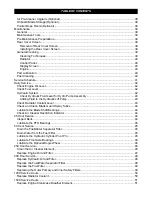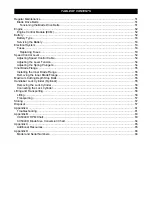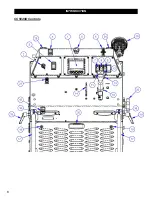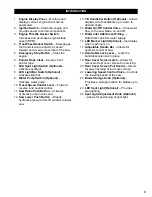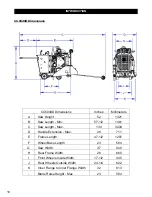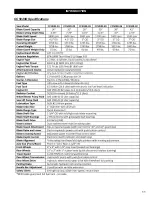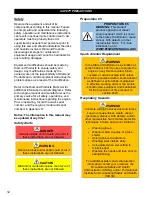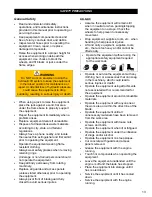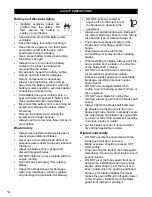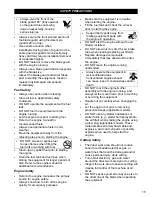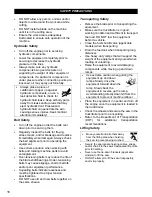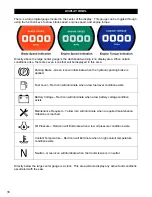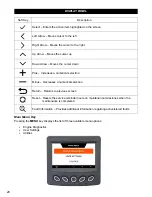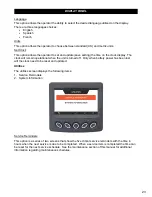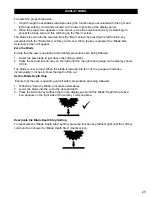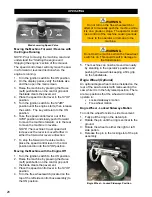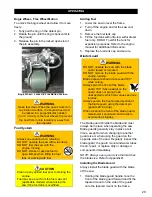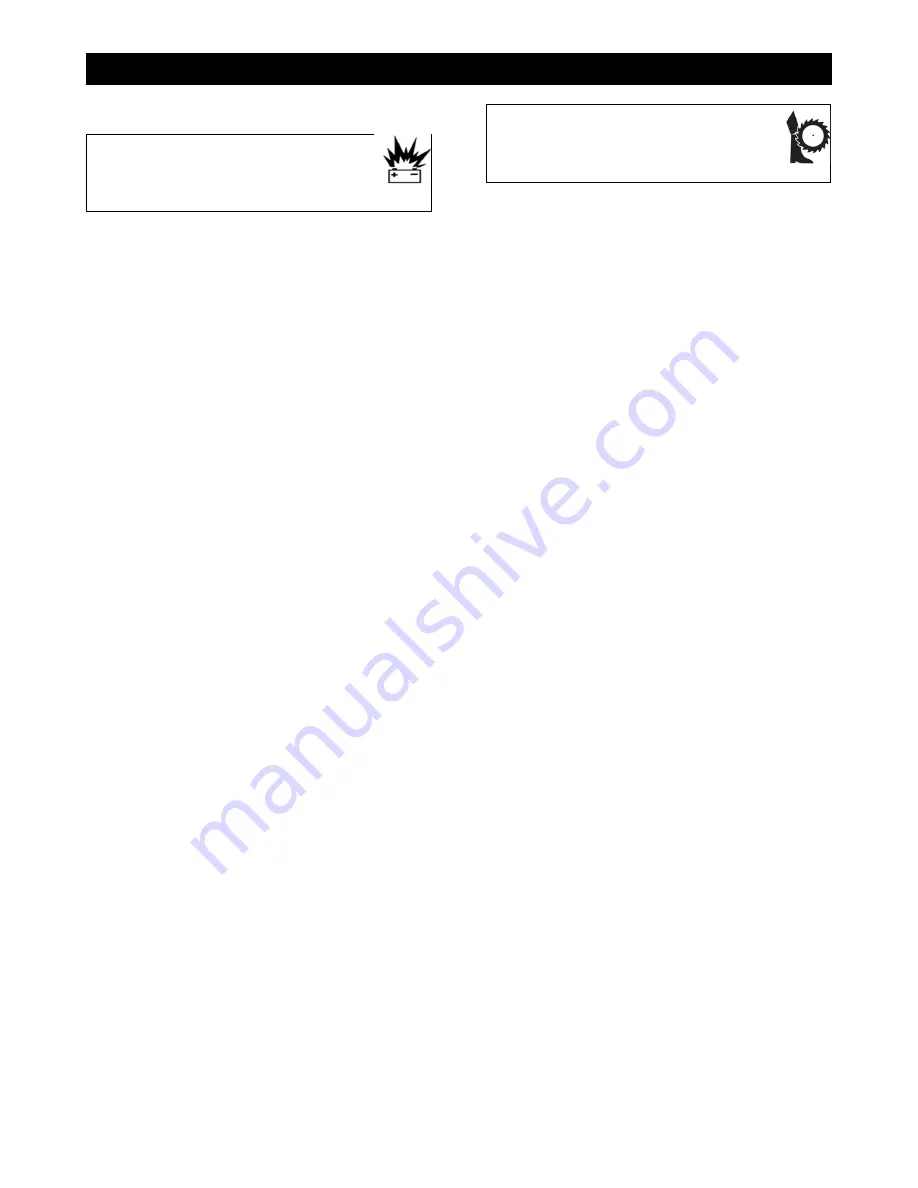
SAFETY PRECAUTIONS
Battery and Electrical Safety
•
Ignitable explosive gases are
emitted from the battery. DO
NOT expose the battery to
sparks or open flames.
•
Keep the area around the battery well-
ventilated.
•
Keep the battery level when handling it.
•
Use protective eyewear or a face shield,
and avoid contact with the skin when
handling/servicing the battery.
•
Use a proper battery tester when testing
the battery strength.
•
Always be sure to connect the battery
cables to the proper terminal when
reconnecting the cables.
•
Occasionally inspect the battery, cables,
clamps, and terminals for damages.
Service components as necessary.
•
Always keep the battery cable clamps
away from the battery terminals when the
battery is disconnected to avoid accidental
connections while servicing.
•
Immediately rinse your clothing, skin, or
eyes with water if exposed to battery acid.
Seek medical attention immediately!
•
Disconnect the battery prior to servicing all
equipment components (unless stated
otherwise).
•
Remove the battery when storing the
equipment for longer periods.
•
Always use the correct size fuses (amps) to
prevent fires.
Blade Safety
•
Always use reinforced abrasive blades or
steel-centered diamond blades.
•
Never use a wet cutting blade without an
adequate water supply to properly lubricate
the blade.
•
Inspect all blades prior to usage and
discard damaged blades.
•
DO NOT install or remove a blade with the
engine running.
•
Keep all body parts away from rotating
blades.
•
Inspect the blade flanges for damages,
wear, and cleanliness. Clean or replace
dirty/damaged components immediately.
•
DO NOT expose yourself or
anyone else to the direct line of
the blade when operating the
equipment.
•
Always use an appropriate size blade and
the correct blade type based on the cutting
task and the type of material being cut.
•
The blade must always fit snug on the
blade shaft, outer flange, and/or inner
flange.
•
Wear gloves and be alert to the
surrounding environment when handling
blades.
•
When installing the blade, always point the
arrow printed on the blade in the direction
of the blade shaft’s rotation.
•
DO NOT exceed the blade’s maximum
recommended speed when cutting.
Excessive blade speeds can cause blade
breakage, resulting in serious injuries
and/or death!
•
DO NOT use damaged blades when
cutting to avoid harming yourself, others, or
the equipment.
•
DO NOT use a blade for cutting that
requires a lower speed than the blade shaft
speed.
•
Always tighten the blade shaft bolt/screw
as directed to properly secure the outer
flange and blade. Failure to properly secure
the outer flange and blade may cause parts
to loosen or fall off the equipment, resulting
in serious injuries or death!
•
Let the blade cool prior to removal when
dry cutting (applicable models).
Blade Guard Safety
•
DO NOT operate the equipment with the
blade guard raised or removed.
•
Blade exposure should not exceed 180°
while cutting.
•
When pivoting the front of the blade guard,
raise/lower it cautiously and slowly to avoid
serious injuries.
•
DO NOT pivot the blade guard front up or
down when installing/removing very large
blades. Attempting to pivot the front of a
heavy guard when the guard is positioned
higher up for blade installation/removal
makes the guard difficult to lift and/or lower.
In this situation, install/remove the blade
guard front instead of pivoting it.
14
Summary of Contents for CC5049D
Page 1: ...CORE CUT OPERATOR S MANUAL CC5049D Rev 21 00 Part 1802721...
Page 2: ......
Page 8: ...INTRODUCTION CC5049D Controls 8...
Page 11: ...INTRODUCTION CC5049D Specifications 11...
Page 58: ...REFERENCES 58...
Page 59: ...REFERENCES 59...
Page 60: ...REFERENCES 60...
Page 67: ......





